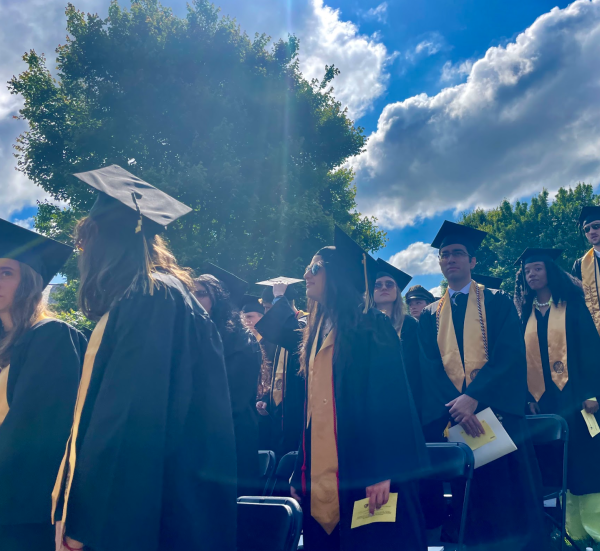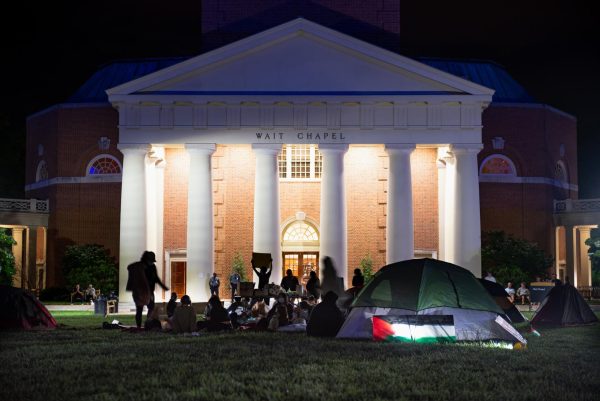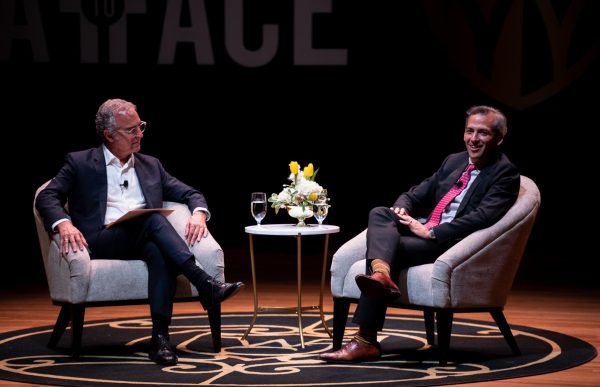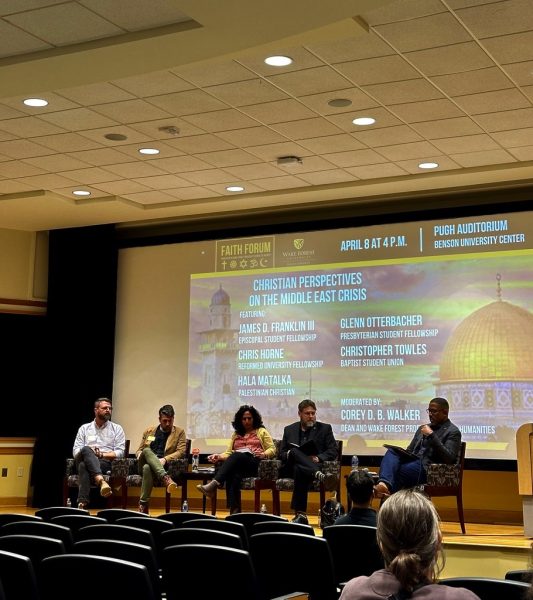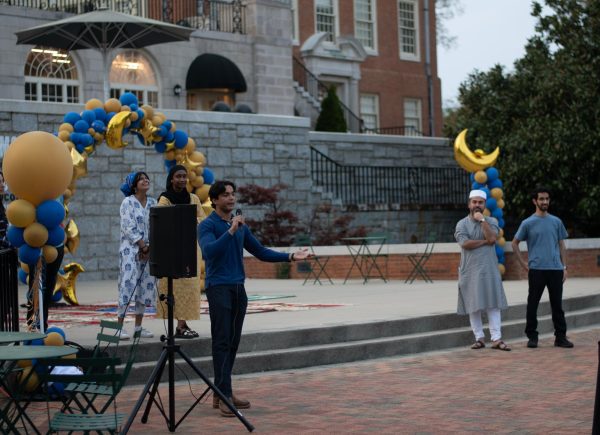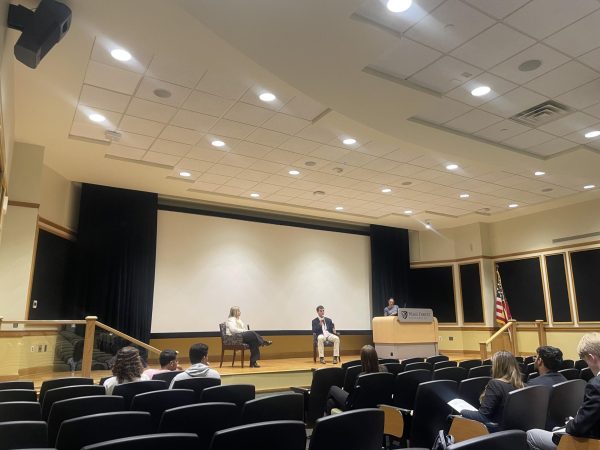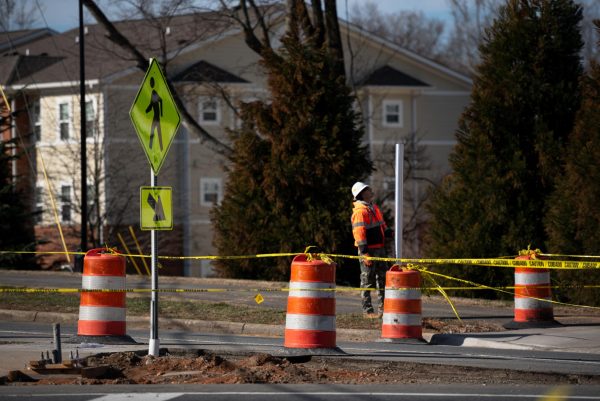Journalism professor gives climate talk
Professor Justin Catanoso outlined developments in climate policies
Courtesy of the Forsyth Public Library
Great Decisions is a forum in which speakers discuss policy.
April 24, 2022
On April 14, Justin Catanoso — author and Wake Forest journalism professor — spoke at a Great Decisions forum to address global policies that slow down the impact of climate change.
The talk was held in Scales Fine Arts Center as a part of the “Great Decisions Series”, a national foreign policy education program sponsored by the non-partisan Foreign Policy Association.
Catanoso described potential policies that inspire hope for the future, since he believes most international efforts thus far have been ineffective.
Catanoso recounted his travels across the globe to participate in many U.N. Climate Summits —- conferences that bring together leaders of governments and corporations around the world to discuss solutions to climate change.
These conferences are often referred to as “COPs”, or Conference of the Parties. During Catanoso’s first conferences — COP20 and COP21 — the U.N. formed and signed the Paris Agreement, which set limitations on each country’s environmental impact in an effort to reduce their contributions to climate change. Catanoso left that conference believing there was immense hope for progress.
“There was this amazing hope that we would continue to make this level of progress year after year,” he said.
However, Catanoso expressed worldwide concern for the environment after the 2016 election, as former President Donald Trump pulled the U.S. out of the Paris Agreement.
“The climate movement, if there was one, essentially ground to a halt,” he said.
According to Catanoso, with the absence of the U.S. at COP25 in 2019, the leaders that held the most power at the following conference were those whose interests lie in the destruction of the environment: Brazil, Saudi Arabia, Russia and Australia. After that conference, Catanoso’s hope for future change began to fade.
“This was the opposite direction that we needed to be going, and any of the hope that came out of Paris had dissipated,” Catanoso said.
He began to describe how this lack of international cooperation spurred climate change. Following these conferences, climate scientists were shocked by the rate of impact from global warming, which was accelerating much quicker than anticipated.
COP26 in 2021 seemed to be the last hope to slow down global warming. With the United States back in the movement, the hope of progress was imminent. More people participated in COP26 than ever before, and tremendous progress resulted.
“However, the progress came six years too late,” Catanoso said. “If this meeting had come a year or two after Paris, it would have been deemed a qualified success. But six years later, the consensus was that it was a failure.”
To combat this disappearing sense of hope, Catanoso emphasized that there is still time to act — if we aggressively fight to reduce deforestation and greenhouse gases in the atmosphere. He declared that there were two promising solutions resulting from COP26: returning land rights to Indigenous communities and removing methane from the atmosphere.
He also said that the tropical rainforest biome is an asset to the fight against climate change. This biome sequesters carbon from the atmosphere, generates oxygen and maintains biodiversity, among other functions.
“If we don’t have tropical forests, we don’t have a healthy planet,” Catanoso said.
He described how over the decades, deforestation has demolished the tropical rainforests at a rapid rate. To secure the land against threats of logging and deforestation, he suggests that land rights – to as much of the rainforest as possible – be returned to the Indigenous communities that reside within the rainforests.
During COP26, an Indigenous leader from Brazil told Catanoso, “The rainforest is inside of us. We cannot destroy our ancestral homes. We know what to do and we have a framework, but first we need our land back.”
Catanoso argues that “words must be matched by money” to successfully implement change. For example, at COP26, philanthropists pledged $1.7 billion to promote this legislation.
In terms of greenhouse gasses, Catanoso advocates that world leaders should turn their attention to methane gas. While this compound is not as abundant as carbon dioxide and dissipates faster, it is 85% more heat-trapping than carbon dioxide.
COP26 introduced innovations that would remove methane from the atmosphere, a technique known as global cooling.
“Removing methane already in the atmosphere is the quickest pathway to mitigating the effect of greenhouse gasses,” Catanoso said.
To do so, scientists would release a compound of iron chloride to oxidize methane gas, essentially breaking it down into CO2, which is far less heat-trapping,” Catanoso said. This would dramatically “speed up the natural processes that are already happening”.
If accomplished, removing methane could reduce global temperatures by 0.4% or more in 20 years, putting the planet back on track by accomplishing the temperature target set by the Paris Agreement.
However, much like returning land tenure rights to the Indigenous, this can only be accomplished if matched by large amounts of funds for research and testing — and it must be done as fast as possible.
“We’ve lost so much time already, and there simply is none left,” Catanoso said.
Speaking directly to Wake Forest students, Catanoso urges students to use their knowledge of climate change to get involved.
“The most important thing college students can do is vote for candidates who will make this climate action happen,” he said.













